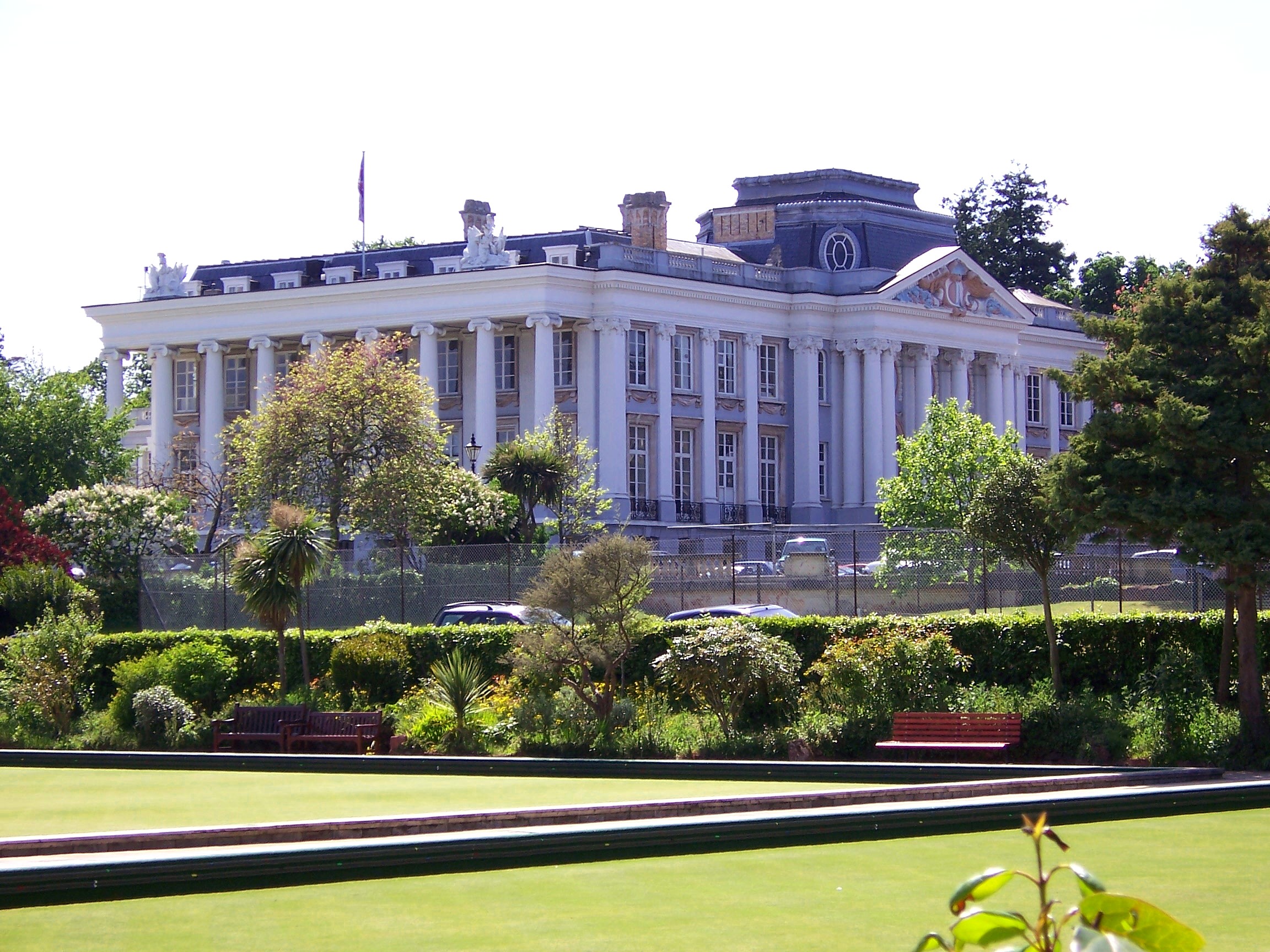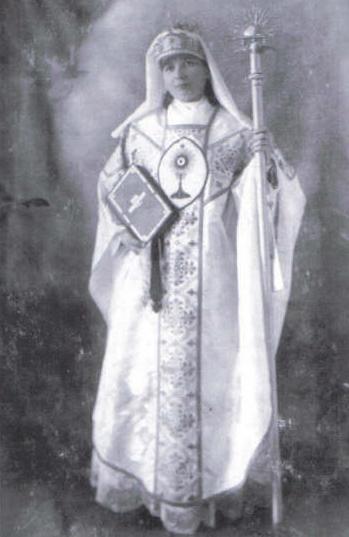|
Christ Church, Paignton
Christ Church is a Church of England, Evangelical parish church in Paignton, Devon, England. Designed by Walter G. Couldrey and Edward Gabriel, the church was built in 1887–88 and has been a Grade II listed building since 1993. History Christ Church was built at a time when Paignton was undergoing rapid growth and expansion. Efforts towards the construction of a new church had been made from around 1863, but these early efforts did not come to fruition and neither did a proposal to begin conducting services at Paignton's Temperance Hall. In April 1886, a public meeting was held at the hall to determine whether a separate ecclesiastical district should be formed in the northern region of Paignton parish and a new church erected to serve it. Mrs. Disney Robinson of Torquay had already promised £1,500 towards the endowment. The result of the meeting was to begin raising subscriptions and a building committee was established. The Ecclesiastical Commissioners agreed to match Mrs. R ... [...More Info...] [...Related Items...] OR: [Wikipedia] [Google] [Baidu] |
Paignton
Paignton ( ) is a seaside town on the coast of Tor Bay in Devon, England. Together with Torquay and Brixham it forms the borough of Torbay which was created in 1998. The Torbay area is a holiday destination known as the English Riviera. Paignton's population in the United Kingdom Census of 2011 was 49,021. (Word document) It has origins as a Celtic settlement and was first mentioned in 1086. It grew as a small fishing village and a new harbour was built in 1847. A railway line was opened to passengers in 1859 creating links to Torquay and London. As its population increased, it merged with the villages of Goodrington and Preston. Paignton is around north east of Plymouth and south of Exeter, and has the fourth largest population in Devon. History A Roman burial was discovered in 1993 on the Hookhills estate by a householder digging a patio. At first thought to be Neolithic, it was later radiocarbon dated to be between 230 and 390 CE. The burial is of a young woman ag ... [...More Info...] [...Related Items...] OR: [Wikipedia] [Google] [Baidu] |
Edward Bickersteth (bishop Of Exeter)
Edward Henry Bickersteth (25 January 1825 – 16 May 1906) was a bishop in the Church of England and he held the office of Bishop of Exeter between 1885 and 1900. Life Edward Henry Bickersteth was born in Islington, the son of Edward Bickersteth, Rector of Watton, Hertfordshire. He was educated at Trinity College, Cambridge, where he graduated B.A. in Classics 1847, and proceeded M.A. in 1850. and was awarded the Chancellor's Gold Medal for poetry in 1844, 1845 and 1846. On taking Holy Orders (deacon, 1848, priest 1849),'' Crockford's Clerical Directory'', 1860 (p. 49) he became curate of Banningham, Norfolk, and then of Christ Church, Tunbridge Wells. He was called to the Rectory of Hinton Martell in 1852 and to the Vicarage of Christ Church, Hampstead in 1855, a position in which he remained for 30 years. In 1885 he became Dean of Gloucester and in the same year was appointed Bishop of Exeter. Bickersteth was awarded an honorary D.D. by Cambridge University in 1885. S ... [...More Info...] [...Related Items...] OR: [Wikipedia] [Google] [Baidu] |
Church Of England Church Buildings In Devon
Church may refer to: Religion * Church (building), a building for Christian religious activities * Church (congregation), a local congregation of a Christian denomination * Church service, a formalized period of Christian communal worship * Christian denomination, a Christian organization with distinct doctrine and practice * Christian Church, either the collective body of all Christian believers, or early Christianity Places United Kingdom * Church (Liverpool ward), a Liverpool City Council ward * Church (Reading ward), a Reading Borough Council ward * Church (Sefton ward), a Metropolitan Borough of Sefton ward * Church, Lancashire, England United States * Church, Iowa, an unincorporated community * Church Lake, a lake in Minnesota Arts, entertainment, and media * ''Church magazine'', a pastoral theology magazine published by the National Pastoral Life Center Fictional entities * Church (''Red vs. Blue''), a fictional character in the video web series ''Red vs. Blue'' ... [...More Info...] [...Related Items...] OR: [Wikipedia] [Google] [Baidu] |
Buildings And Structures In Paignton
A building, or edifice, is an enclosed structure with a roof and walls standing more or less permanently in one place, such as a house or factory (although there's also portable buildings). Buildings come in a variety of sizes, shapes, and functions, and have been adapted throughout history for a wide number of factors, from building materials available, to weather conditions, land prices, ground conditions, specific uses, monument, prestige, and aesthetic reasons. To better understand the term ''building'' compare the list of nonbuilding structures. Buildings serve several societal needs – primarily as shelter from weather, security, living space, privacy, to store belongings, and to comfortably live and work. A building as a shelter represents a physical division of the :Human habitats, human habitat (a place of comfort and safety) and the ''outside'' (a place that at times may be harsh and harmful). Ever since the first cave paintings, buildings have also become objects or ... [...More Info...] [...Related Items...] OR: [Wikipedia] [Google] [Baidu] |
Torquay Limestone
The Torquay Limestone is a geologic formation in England. It preserves fossils dating back to the Devonian period. See also * List of fossiliferous stratigraphic units in England See also * Lists of fossiliferous stratigraphic units in Europe * Lists of fossiliferous stratigraphic units in the United Kingdom References * {{DEFAULTSORT:Fossiliferous stratigraphic units in England England United Kingdom geology-rel ... References * Geologic formations of England Devonian System of Europe Devonian England Limestone formations {{England-stub ... [...More Info...] [...Related Items...] OR: [Wikipedia] [Google] [Baidu] |
Caen Stone
Caen stone (french: Pierre de Caen) is a light creamy-yellow Jurassic limestone quarried in north-western France near the city of Caen. The limestone is a fine grained oolitic limestone formed in shallow water lagoons in the Bathonian Age about 167 million years ago. The stone is homogeneous, and therefore suitable for carving. Use in building The stone was first used for building in the Gallo-Roman period with production from open cast quarries restarting in the 11th century. Shipped to England, Canterbury Cathedral, Westminster Abbey Westminster Abbey, formally titled the Collegiate Church of Saint Peter at Westminster, is an historic, mainly Gothic church in the City of Westminster, London, England, just to the west of the Palace of Westminster. It is one of the United ... and the Tower of London were all partially built from Caen stone. Underground mining developed in the 19th century, but the stone trade declined in the 20th century eventually ceasing in t ... [...More Info...] [...Related Items...] OR: [Wikipedia] [Google] [Baidu] |
Alternative Episcopal Oversight
A provincial episcopal visitor (PEV), popularly known as a flying bishop, is a Church of England bishop assigned to minister to many of the clergy, laity and parishes who on grounds of theological conviction, "are unable to receive the ministry of women bishops or priests". The system by which such bishops oversee certain churches is referred to as alternative episcopal oversight (AEO). History The Church of England ordained its first women priests in 1994. According to acts of the General Synod passed the previous year ( Priests (Ordination of Women) Measure 1993), if a parish does not accept the ministry of women priests it can formally request that none be appointed to minister to it. Via the ''Episcopal Ministry Act of Synod 1993'', if the local bishop has participated in the ordination of women as priests, a parish can request to be under the pastoral and sacramental care of another bishop who has not participated in such ordinations. In such a case the parish still remains i ... [...More Info...] [...Related Items...] OR: [Wikipedia] [Google] [Baidu] |
Bishop Of Maidstone
The Bishop of Maidstone is an episcopal title used by a suffragan bishop of the Church of England Diocese of Canterbury, in the Province of Canterbury, England. The title takes its name after the county town of Maidstone in Kent. Canterbury suffragan Until 2009, the suffragan Bishop of Maidstone had a similar, though subordinate, role to that of the Bishop of Dover: to assist the diocesan bishop (the Archbishop of Canterbury) in the episcopal leadership of the Diocese of Canterbury. It was decided at the diocesan synod of November 2010 that a new bishop would not be appointed; rather the Archdeaconry of Ashford was erected. "Headship" bishop On 4 December 2014, it was announced that the see of Maidstone would be filled again in order to provide alternative episcopal oversight for particular members of the Church of England who take a conservative evangelical view on male "headship". [...More Info...] [...Related Items...] OR: [Wikipedia] [Google] [Baidu] |
Ordination Of Women
The ordination of women to ministerial or priestly office is an increasingly common practice among some contemporary major religious groups. It remains a controversial issue in certain Christian traditions and most denominations in which "ordination" (the process by which a person is understood to be consecrated and set apart by God for the administration of various religious rites) was often a traditionally male dominated profession (except within the diaconate and early heretical movement known as Montanism). In some cases, women have been permitted to be ordained, but not to hold higher positions, such as (until July 2014) that of bishop in the Church of England. Where laws prohibit Anti-discrimination law, sex discrimination in employment, exceptions are often made for clergy (for example, in the United States) on grounds of Separation of church and state in the United States, separation of church and state. The following aims to provide a comprehensive overview of the o ... [...More Info...] [...Related Items...] OR: [Wikipedia] [Google] [Baidu] |
Complementarianism
Complementarianism is a theological view in Christianity, Judaism, and Islam, that men and women have different but ''complementary'' roles and responsibilities in marriage, family life, and religious leadership. The word "complementary" and its cognates are currently used to denote this view. Some Christians interpret the Bible as prescribing complementarianism, and therefore adhere to gender-specific roles that preclude women from specific functions of ministry within the community. Though women may be precluded from certain roles and ministries, they are held to be equal in moral value and of equal status. The phrase used to describe this is 'Ontologically equal, Functionally different'. Complementarians assign primary ''headship'' roles to men and ''support'' roles to women based on their interpretation of certain biblical passages. One of the precepts of complementarianism is that while women may assist in the decision-making process, the ultimate authority for the deci ... [...More Info...] [...Related Items...] OR: [Wikipedia] [Google] [Baidu] |
Churchmanship
Churchmanship (or churchpersonship; or tradition in most official contexts) is a way of talking about and labelling different tendencies, parties, or schools of thought within the Church of England and the sister churches of the Anglican Communion. Overview The term is derived from the older noun ''churchman'', which originally meant an ecclesiastic or clergyman but, some while before 1677, it was extended to people who were strong supporters of the Church of England and, by the nineteenth century, was used to distinguish between Anglicans and Dissenters. The word "churchmanship" itself was first used in 1680 to refer to the attitude of these supporters but later acquired its modern meaning. While many Anglicans are content to label their own churchmanship, not all Anglicans would feel happy to be described as anything but "Anglican". Today, in official contexts, the term "tradition" is sometimes preferred. " High" and "Low", the oldest labels, date from the late seventeenth c ... [...More Info...] [...Related Items...] OR: [Wikipedia] [Google] [Baidu] |



